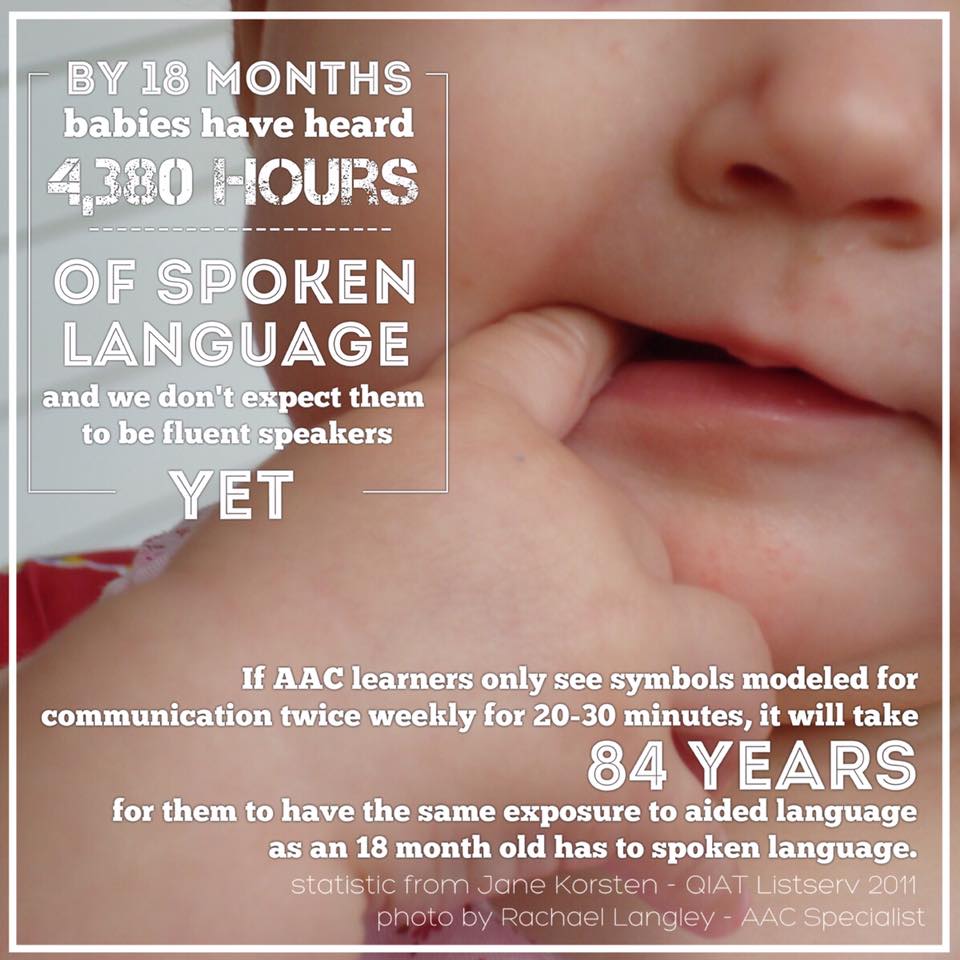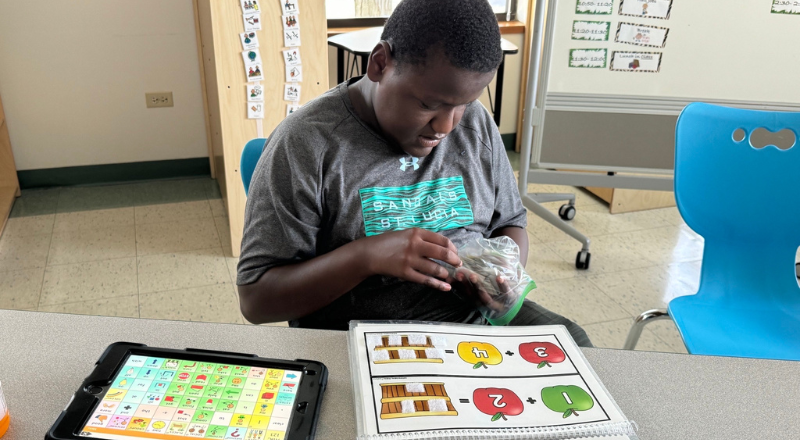by Lexy Abbinanti, Keshet Speech-Language Pathologist
The start of a new school year is an equally exciting and nerve wracking time for educators, students, and families alike. Transitions may be particularly difficult for AAC users and their families–especially those dealing with the pressures associated with entering a new school or classroom, being assigned to a new teacher and educational team, and building relationships with peers.
All About AAC
What is AAC?
AAC stands for augmentative and alternative communication. AAC is the use of any tool, strategy, or equipment to replace or supplement existing speech for individuals who cannot rely on speech to communicate or are not easily understood by others.
It is a common misperception that once a student is given an AAC device that they will immediately know how to use it; however, this is not the case. Students need to be explicitly taught how to use their device/system and one way to teach them is by modeling.
What is modeling?
Modeling, also known as aided language stimulation, is when a peer or adult uses a student’s AAC system to show them how it may be used to communicate. You do this by pointing to the words or symbols on the device as you say the word at the same time.
Remember, the purpose of modeling is to show the AAC user how to use the device, it is not to insist that they reply, nor is it to make them copy you. Modeling is the responsibility of everyone on the student’s team, and not just during speech therapy sessions. The importance of modeling is best understood by the statistic provided in the image below.

Now that we have covered some AAC basics, let’s dive into some of the ways you can best support AAC users this school year.
5 AAC Quick Tips for Families, Educators, & Peers
1. Have AAC Tools/Devices Accessible At All Times – Families can support the educational team by making sure their child’s AAC system and charger is sent with them every day. Educators can partner with their schools SLP to educate classroom staff and advocate for AAC access consistently throughout the school day. This sets the student up for success and allows maximum opportunities for learning.
2. Model – Every person that interacts with an AAC user can support them by teaching them how to use their device, where to find words, and what kinds of words can be used for what purposes. Do this by using the AAC system to communicate to the student when you are talking to them. Focus on using verbs and describing words, not just nouns. Verbs can be used to create hundreds of messages for reasons including commenting, rejecting, requesting, and asking questions.
3. Believe in Your AAC User’s Highest Potential – You owe it to your student to believe in their continued ability to learn, grow, and succeed. Our AAC users deserve to feel both respected and accepted for their current skills/abilities while also being supported to build new skills.
4. Connect Don’t Test – AAC can feel overwhelming for everyone. If you feel your head swirling, take a breath and remember at the core, AAC is a tool to support individuals with unreliable speech to connect more fully with loved ones and build meaningful social relationships. Avoid “testing” the AAC user by asking too many factual questions they know the answer to, instead initiate conversation. Use the device to talk about their preferred topics, tell jokes, and focus on engaging with them authentically. Don’t feel pressure to “test” what they know. You don’t have to prove their progress to anyone.
5. Make It Fun – Families, you can partner with your AAC user’s SLP to share stories, fun memories, anything personal and meaningful to the student. All of these things can be programmed into the AAC device and offer increased motivation for your student to share using their device.
I hope you walk away from this article feeling more equipped to support your AAC users this school year. Give yourself grace and embrace the journey that is AAC. Remember the invaluable role that you play in supporting AAC users in developing new skills, meaningful relationships and communication autonomy–the ability to choose what they want to communicate, how they want to communicate, when they want to communicate, and to whom.

